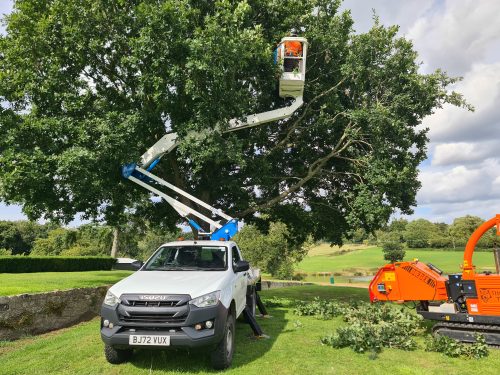 https://www.wilsontreesurgery.com/wp-content/uploads/2024/09/20230807_162313-500x375.jpg
https://www.wilsontreesurgery.com/wp-content/uploads/2024/09/20230807_162313-500x375.jpg
Machinery used in utility arboriculture
Read more
by Wilson Tree Surgery |
As the summer sun shines brightly, those of us working in the tree surgery industry face unique challenges. The warm weather can pose serious risks, including skin cancer and heat stress, as well as higher risk of accidents due to decreased concentration. At Wilson Tree Surgery Limited, we prioritise the safety and well-being of our team. This blog provides essential tips for staying safe while working in hot and sunny conditions.
Understanding the Risk
Exposure to UV radiation is a significant occupational hazard for tree surgeons. Skin cancer, one of the most common forms of cancer, sees around 40,000 new cases each year in the UK alone. Individuals with pale skin, fair hair, or a family history of skin cancer are particularly at risk, but everyone should be vigilant.
Preventive Measures
What is Heat Stress?
Heat stress occurs when the body can no longer regulate its internal temperature effectively. This can be exacerbated by factors such as high work rate, humidity, and inappropriate clothing. Symptoms can range from mild discomfort to severe, life-threatening conditions like heat stroke.
How the Body Reacts
In response to heat, the body increases blood flow to the skin’s surface and produces sweat, which evaporates and cools the body. However, in humid conditions or when wearing heavy protective clothing, sweat evaporation is less effective, leading to increased core body temperature.
Symptoms to Watch For
Prevention and Management
To help keep everyone safe, remember the 4 S rule:
It’s essential not to compromise safety by reducing protective measures to cope with the heat. For instance, do not substitute a helmet with a hat or wear less protective trousers to stay cool.
Working in hot and sunny conditions requires vigilance and proper precautions. By following these guidelines, we can reduce the risks associated with high temperatures and ensure a safe working environment for everyone.
Stay safe, stay cool, and remember: your health and safety come first.
 https://www.wilsontreesurgery.com/wp-content/uploads/2024/09/20230807_162313-500x375.jpg
https://www.wilsontreesurgery.com/wp-content/uploads/2024/09/20230807_162313-500x375.jpg
Read more
 https://www.wilsontreesurgery.com/wp-content/uploads/2024/09/AdobeStock_475873508-500x333.jpeg
https://www.wilsontreesurgery.com/wp-content/uploads/2024/09/AdobeStock_475873508-500x333.jpeg
Read more
 https://www.wilsontreesurgery.com/wp-content/uploads/2024/09/pexels-valiphotos-589802-500x333.jpg
https://www.wilsontreesurgery.com/wp-content/uploads/2024/09/pexels-valiphotos-589802-500x333.jpg
Read more